One of the notes I’ve written for The Serket Hack is “a crafting mechanic that isn’t disappointing”.
I love crafting in games; resource management is my passion. Unfortunately, I think most tabletop games which include a crafting feature implement it poorly. Before I draft designs on what exactly I want to put into TSH, I want to do some research and talk about how other designers represent crafting in games. For the first post in this series — and I do assume this will be a multi-parter — I’m focused on crafting in video games.
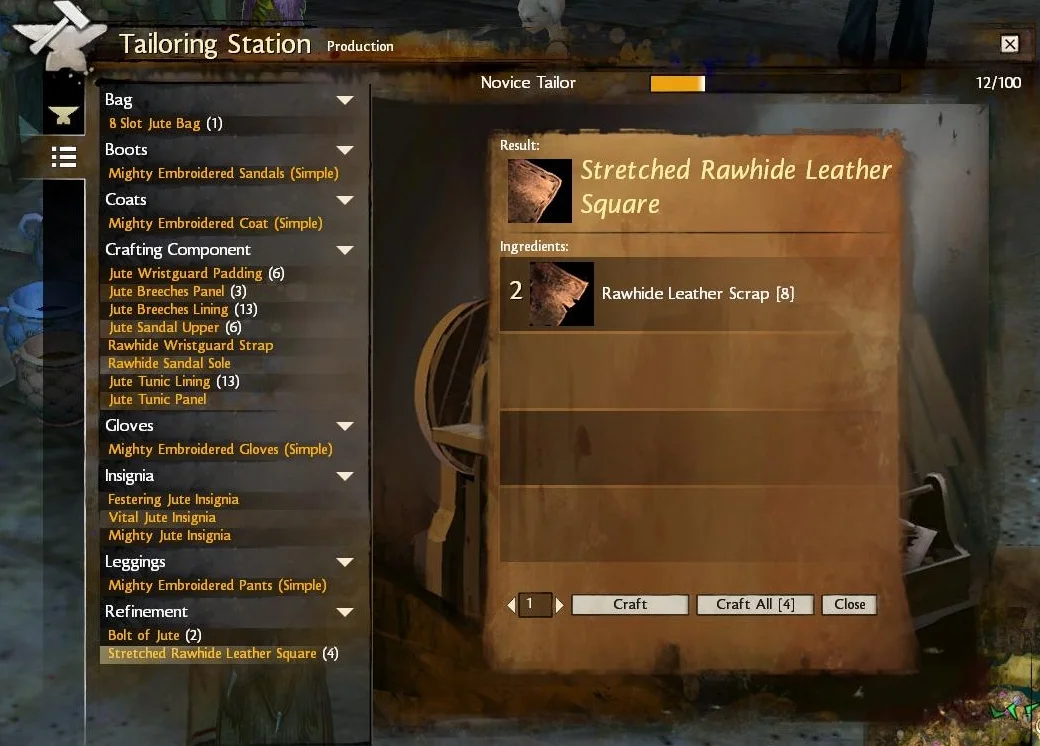
Example 1: Crafting in Guild Wars 2
This is the simplest type of crafting. You have a list of recipes and various ingredients to collect. If you have the necessary ingredients, you press the “craft” button and the item is crafted. There’s even a bulk crafting option to make multiple in one go.
What does this system afford the player? Part of it is certainly the immersion and roleplaying inherent to crafting as a player fantasy. Crafting interacts with primary game loops by providing an alternate way to gear the character and a source of consumable items.
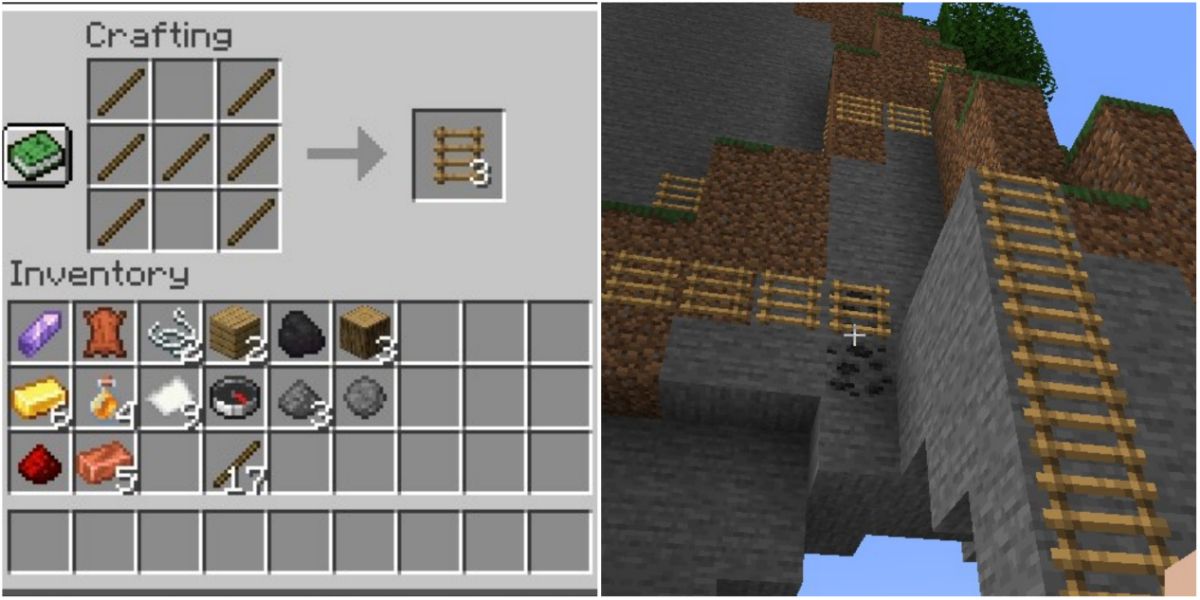
Example 2: Crafting in Minecraft
Minecraft is a step up from GW2-style, requiring the player to arrange the ingredients in a specific orientation in order to create the item. This is the lowest amount of complexity we can add to crafting as a system before developing actual mechanics for the process. The core is the same: collect ingredients and follow a recipe. In fact it’s so simple that Mojang implemented its own recipe book that allows players to click on the finished item and it automatically arranges the ingredients in the grid, removing any challenge from the process.
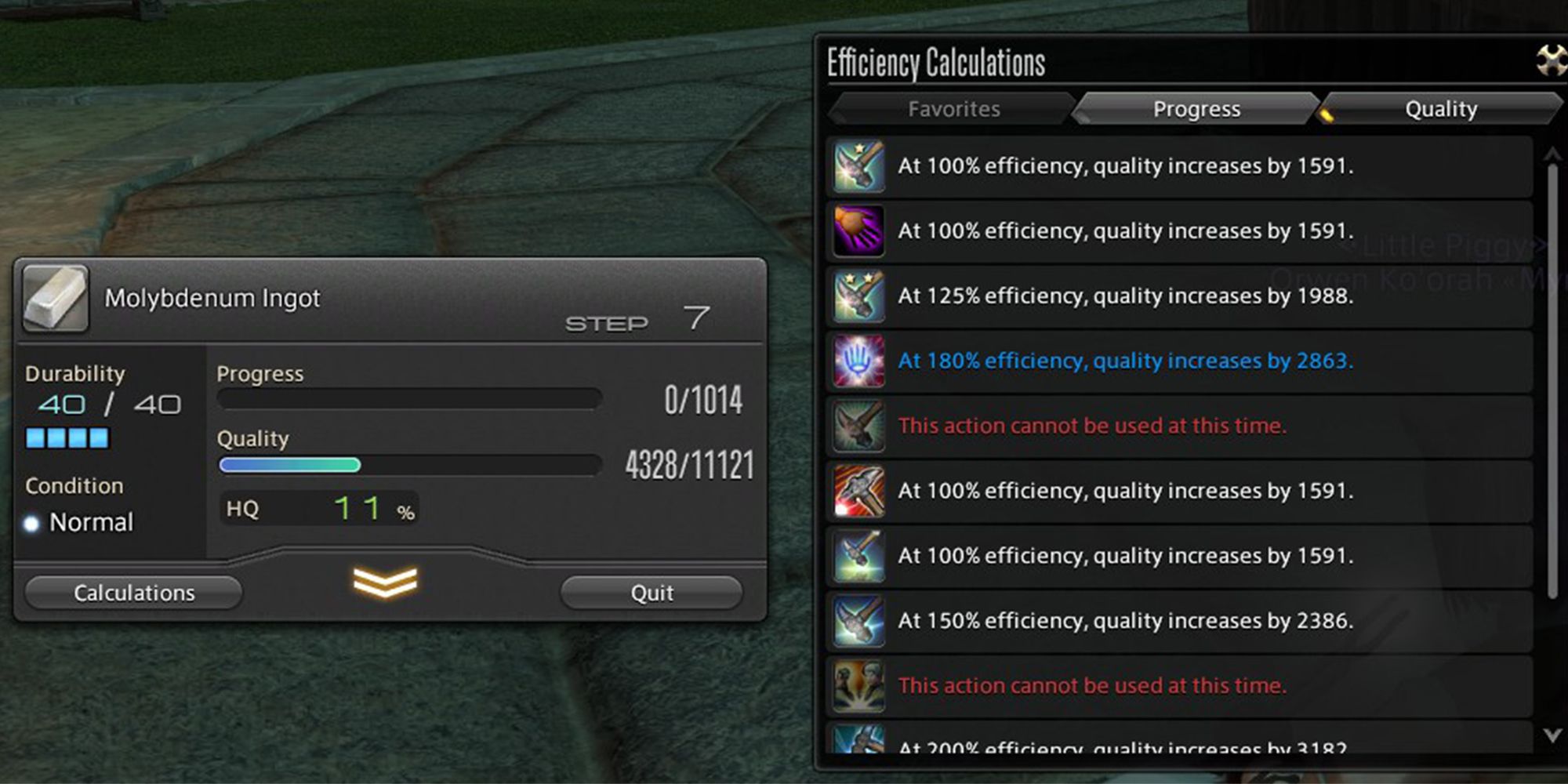
Example 3: Crafting in Final Fantasy XIV
Final Fantasy XIV takes crafting to the next level by adding deep mechanics to the process of making an item. Once you have the required ingredients, you begin synthesis and work to raise the quality to 100% while preventing the durability from reaching 0. In order to complete the craft, you also raise the progress to completion. These three stats govern almost everything about the crafting process.
In the photo above, the current level of quality gives the item an 11% chance to be high-quality when the craft is completed. If you raise the quality bar to 100%, the item has a 100% chance to be HQ when completed. “High quality” is a binary status that a craftable item can have, which increases its base statistics and is always more desirable than the normal quality variant.
Durability functions as a limit on how many actions the player can perform during the course of the craft. An average action uses 10 durability, though there are actions which restore durability or use half/double the amount of durability. Furthermore, almost all actions require you to spend “Crafting Points” which act as mana for crafting abilities, which is why you cannot infinitely use said durability restoration actions.
The entire process becomes a balancing act between multiple resources that you have to raise or keep up, further complicated that the craft can randomly have different conditions. These changing conditions can increase or decrease the effectiveness of actions and allow you to use special abilities.
So we have a really complicated system just for the process of crafting, but ultimately the inputs and outputs of the system are almost the same as either of the above. You start with ingredients and you end up with a completed recipe — the only difference being whether the item in question is high quality or not.
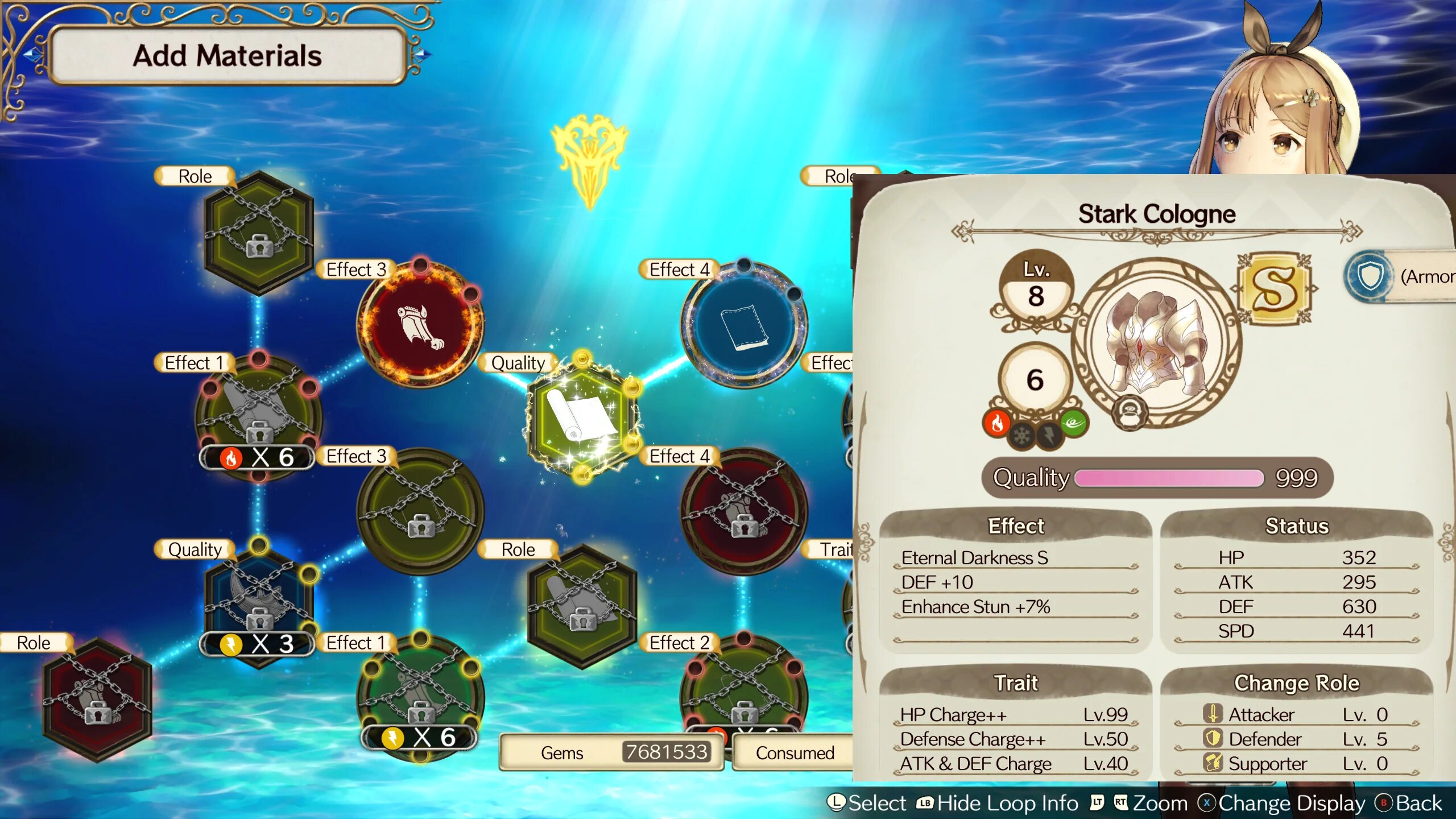
Example 4: Crafting in Atelier Ryza
The Atelier series has some of the most complicated crafting that I know of, given that it’s the primary focus of the game. Ryza is a trilogy within the franchise, and the above screenshot is only the crafting system in the first game.
Every resource in the game world is composed of atomic elements in varying degrees of strength. Each end-recipe requires certain specific resources to begin the craft, and allows further ingredients to be submitted. Adding more resources unlocks additional nodes on the graph, which can be filled to add or change traits on the final product. By chaining together enough nodes, you can unlock an upgraded version of the item (like the next tier of the armor or weapon), which begins a whole new node graph. The optimal way to make gear is to start with the lowest craftable version and add enough resources to chain-upgrade all the way to your end-goal, gaining additional traits along the way.
Crafting in this game takes a long time and rarely produces the same result. It is a system that encourages understanding and mastery while incentivizes the player to go out into the world to find better ingredients to throw into the pot.
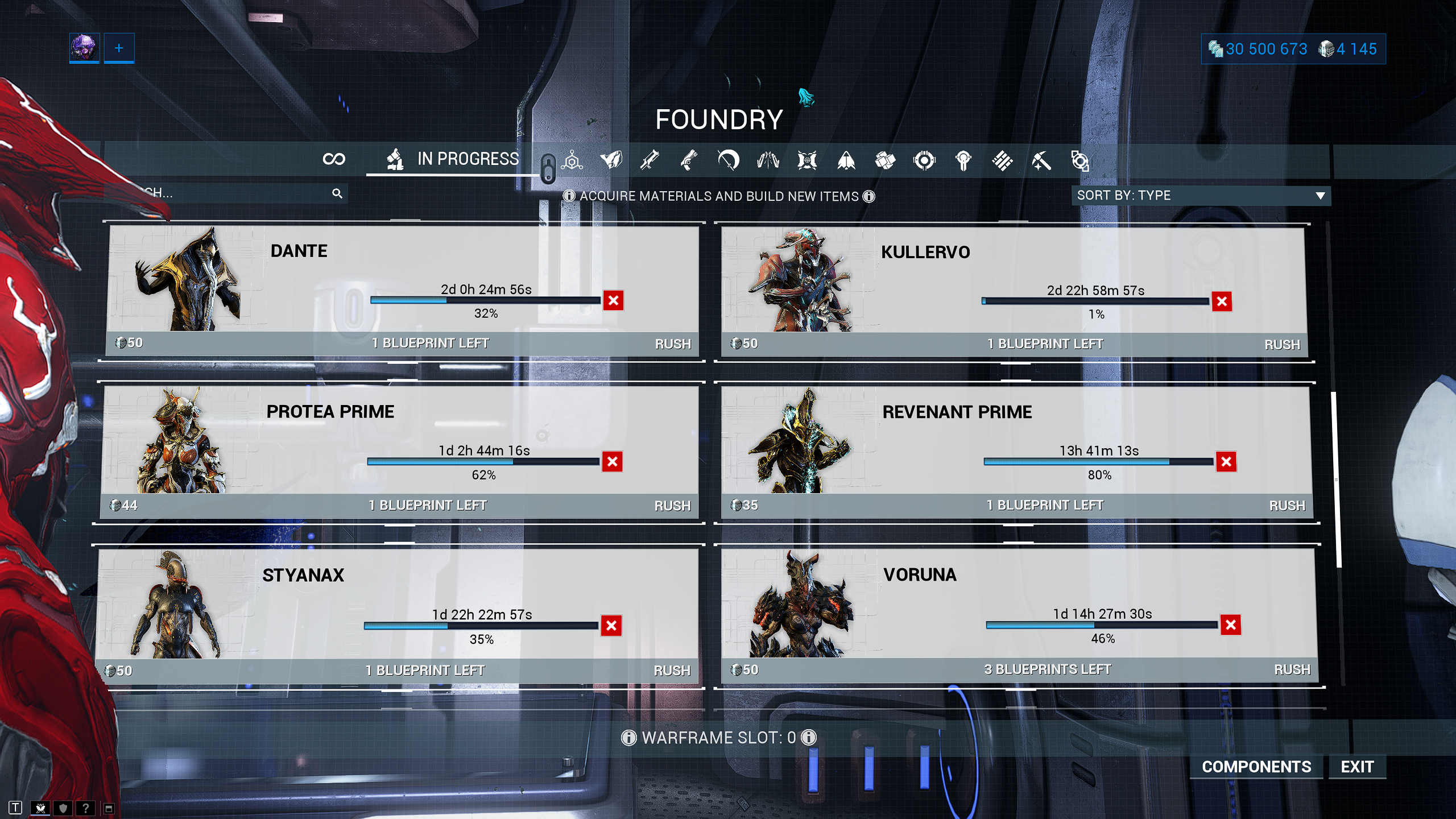
Example 5: Crafting in Warframe
While not particularly complex, I wanted to mention the crafting system found in certain online games such as Warframe and EVE Online. The notable aspect they bring to the table is the inclusion of a “real time” cost for crafting. After gathering the ingredients and choosing to make the recipe, the item takes a number of real world days to complete.
Gathering what we learned:
- Crafting systems take resources as an input and produce items including gear and consumables
- It’s possible to add mechanical complexity to the crafting process in order to establish failure and multiple levels of success.
- It’s possible to add mechanical complexity to introduce irregularity for the crafting results.
We haven’t yet discussed what the goals of our crafting system are, but it’s clear that we have a wide purview in how we can put it together. Ultimately however, this is a system for turning resources into items of use. It’s a “narrowing” system, where players can take the same set of rewards and custom tailor them into something specific to their characters. In the next part, we’ll take a look at how crafting systems have been implemented in tabletop roleplaying games.
